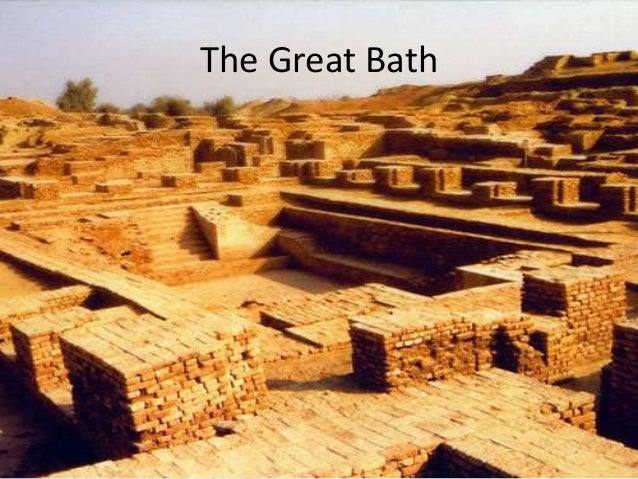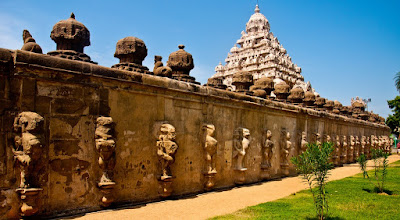https://www.youtube.com/watch?v=kdgc3Jlb1GA
http://www.vikatan.com/news/spirituality/71459-samanar-statues-in-dilapidated-state.html
கலை’ என்பது அளவும் பொருத்தமும் தன்னுள் அடக்கி நிற்பது; அதே நேரத்தில் உள்ளத்திற்கு உவகை ஊட்டுவது; உள்ளத்தைத் தன்பால் ஈர்ப்பது, மனிதனது உள்ளத்தைத் தன் வயமாக்கி, நிரம்பி, அவ்வளவோடு நில்லாமல் வெளிப்படும் ஆற்றலே ‘கலை’ என்பது என்று மா. இராச மாணிக்கனார் கூறுகிறார்.
கலையாற்றல் உள்ளத்தை ஈர்க்கும் காவியமாக வெளியிடலாம், கண்ணைக் கவரும் ஓவியமாக வெளிப்படலாம். சிற்பமாக உருக் கொள்ளலாம், கண்ணையும் கருத்தையும் தன்பால் ஈர்க்கும் அழகிய கட்டமாக வெளிப்படலாம். மனிதனின் ஒவ்வொரு அசைவும் ஒவ்வோர் கலையாக உருவெடுக்கிறது. அதன் விளைவாக மாந்தரின் வாழ்வில் பல வகையான கலைகள் வளர்ந்தன.
அவ்வாறு வளர்ந்த கலைகளின் எண்ணிக்கை அறுபத்து நான்கு என மணிமேகலை கூறுகிறது.
மனிதனுடைய மனத்தில் உணர்ச்சியை எழுப்பி அழகையும் இன்பத்தையும் அளிக்கின்ற பண்பு அழகுக் கலைகளுக்கு உண்டு. அந்த அழகுக் கலைகள் ஐந்து வகைப்படும் என்கிறார் மயிலை. சீனி. வேங்கடசாமி. அவை கட்டடக்கலை, சிற்பக்கலை, ஓவியக்கலை, இசைக் கலை, காவியக்கலை.
கட்டடக் கலையை விட சிற்பக் கலை நுட்பமானது. ‘கல்’ என்னும் பொருளைக் கொண்ட ‘சிலை’ என்பதன் தொடர்பாக ‘சிற்பம்’ எனும் சொல் உருவாயிற்று. இதன் பரிணாம வளர்ச்சியால் அழகுக் கலைகளுள் ஒன்றாக ‘சிற்பம்’ போற்றப்பட்டுச் ‘சிற்பக்கலை’ வழக்கில் வந்துள்ளது.
சிற்ப உருவங்கள் இரண்டு வகைப்படும். (i). முழு உருவச் சிற்பங்கள், (ii) புடைப்புச் சிற்பங்கள். முழு உருவச் சிற்பங்கள் என்பது, பொருள்களின் முன்புறம், பின்புறம் உட்பட முழு உருவமும் தெரிய அமைக்கப்படுவது, புடைப்புச் சிற்பம் (Bas relief) என்பது பொருள்களின் ஒருபுறம் மட்டுமே தெரியும்படிச் சுவர்களிலும், பலகைகளிலும், கல்லிலும் அமைக்கப்படுவது.
பௌத்த சிற்பக் கலை வரலாற்றுச் சுருக்கம்
புத்தர் மனித உருவில் காட்டாத தொன்மைக் காலத்தில், அதாவது தேரவாத பௌத்தம் பிரிவு காலத்தில், புத்தரின் குறியீடுகளான பாதச் சுவடுகள், தர்மச் சக்கரம், மரம், குடை ஆகியவை சிற்பங்களில் இடம் பெற்றன.
புத்தரை மனித உருவில் சிற்பமாக வடிக்காத தேரவாத பௌத்தம் வலிமை குன்றியபோது மகாயானப் பிரிவு தோன்றி புத்தரை மனித உருவில் வணங்கத் தொடங்கினர். அப்போது புத்தரின் வடிவங்கள் பௌத்தக் கலை மரபுகளில் தோன்றி வளர்ந்தன. காந்தாரம், மற்றும் மதுரா பகுதிகளில் கி.பி. ஒன்றாம் நூற்றாண்டில் தோன்றி வளர்ந்த பௌத்தக் கலைகள் புத்தரின் வடிவங்களை அறிமுகப்படுத்தின. தொடர்ந்து புத்தர் மற்றும் பௌத்த சமய தெய்வங்களின் உருவ அமைப்பு படிமக் கலை (Iconography) தோன்றியது.
கனிஷ்கர் (கி.பி. 78-120) காலத்தில் உருவான “காந்தாரக் கலை” கிரேக்க இந்தியக் கலப்பு கலந்த கலையாகும். இக்கலையில் புத்தரின் உருவம் வடிக்கப்பட்டது. புத்தரின் முதல் சிற்பம் கனிஷ்கர் காலத்தில் வடிக்கப்பட்டது. எனவே இந்தியாவில் படிமக் கலை கி.பி. ஒன்றாம் நூற்றாண்டிலிருந்து தான் தொடங்குகிறது எனலாம். இக்கால கட்டத்தி லிருந்து புத்தர் கடவுளாக வணங்கப்பட்டார்.
இந்தியாவில் உருவான பௌத்த சிற்பக் கலையானது பௌத்தம் பரவிய ஆசிய நாடுகளுக்கும் சென்றது. மூலக் கருத்துக்களை எவ்வித மாற்றத்துக்கும் உட்படுத்தாமல் அந்தந்த நாட்டுப் பண்பாட்டுக் கூறுகளை இணைத்து அந்தந்த நாடுகளில் பௌத்தக் கலைச் சின்னங்களும், சிற்பங்களும் அமைக்கப்பட்டன.
பௌத்த சமயம் எங்கெல்லாம் ஊடுருவிப் பரவியதோ அங்கெல்லாம் பௌத்தர்களின் கலையும் தொடர்ந்து சென்றது. இந்தியா இதுவரை உருவாக்கிய சிற்பக் கலை பொருள்கள் எல்லாவற்றிலும் நேர்த்தி வாய்ந்தவையாகவும், அழகானவையாகவும், உள்ளவை பௌத்த சிற்பக் கலையே.
புத்தரின் சிற்ப வடிவம்
புத்தரது உருவங்கள் பௌத்த குட வரைகளிலும், சைத்தியங்களிலும், தனி சிற்பங்களாகக் காண முடிந்தது. புத்தரின் உருவம் நின்ற நிலையிலோ, (Sthanaka Standing), அமர்ந்த நிலையிலோ, (Asana - Seated) கிடந்த நிலையிலோ (Sayana- recumbent) வடிவமைக்கப்பட்டன.
நின்ற நிலையிலுள்ள புத்தர் தன் உடல் முழுவதும் அங்கியால் போர்த்தப்பட்டு, ஒரு கையைத் தொங்கவிட்டு மறு கையில் அபயம் ஹஸ்தம் காட்டி நிற்பார் (இடது கை அல்லது வலது கை ஆசீர்வாதம் செய்வது போல்).
அமர்ந்த நிலையில், பொதுவாக தாமரையில் அமர்ந்திருப்பார். இரு கால்கள் குறுக்காக மடக்கி வைத்திருப்பார். கண்கள் பாதியளவு மூடியிருக்கும், மூக்கின் நுனியைப் பார்த்துக் கொண்டிருக்கும், காதுகள் துளையிட்டு நீண்டு இருக்கும். மூக்கில் மேல் தடிப்பு காணப்படும். தலைமுடி, சுருள் சுருளாக முடிக்கப்பட்டிருக்கும் அதன் மேல் ஒரு ஞான முடிச்சி (ஒளி வட்டம்) தென்படும். உடல் முழுக்க ஆடையால் போர்த்தப்பட்டிருக்கும் (அங்க வஸ்திரம்).
கிடந்த நிலையில், புத்தரின் பரிநிர்வாணத்தை காட்சிச் சிற்பமாகக் காட்டப்பட்டுள்ளது. புத்தர் படுத்துக்கொண்டு, ஒரு பக்கம் சாய்ந்து, தனது வலது கையை மடக்கித் தலைக்குக் கீழ் தலை யணையில் வைத்திருப்பார். அவரது முகத்தில் கருணையும், அமைதியும் ஒன்று சேர்ந்தது போல் காட்டப்பட்டிருக்கும்.
முத்திரைகள், புத்தர் கரங்களின் முத்திரைகளோடு (mudras) சித்திரிக்கப்படுகிறார். ஒவ்வொரு கரத்தின் முத்திரையும் பொருளுடையது. பௌத்தத்தில் பல தெய்வங்கள் பல்வேறு வகைகளான கரங்களின் முத்திரைகளோடு சித்திரிக்கப்படுகிறார்கள். முத்திரை பட்டியல் மிகவும் நீளமானது. அதில் சிறப்பாக ஆறு முத்திரைகள் புத்தரைச் சித்திரிப்பதற்காகவே தொடர்ந்து கையாளப்படுகின்றன.
(1) தியான முத்திரை - தியான சமாதியில் ஆழ்ந்து திளைத்திருக்கும். தத்துவார்த்தமாக, மெய் ஞானப் பேற்றினை அடைந்திருப்பதை இந்த முத்திரை குறிக்கின்றது.
(2) வரத முத்திரை- இந்த முத்திரை தானத்தையும், தாராள மனத்தையும் குறிக்கின்றது. வேண்டிய வரம் அல்லது நல்லாசி இதன் மூலம் வழங்கப்படுகிறது.
(3) அபய முத்திரை -பயமின்மையைக் குறிக்கின்றது. (பயம், அச்சம், கவலை, திகில், இடர் தவிர்த்தல்)
(4) விதர்க்க முத்திரை-அறிவு பூர்வமாக ஆராய்ந்து விளக்குதல்
(5) தர்மச் சக்கர முத்திரை-சரியாகக் கூறின் தர்மச் சக்கரப் பரிவர்த்தன முத்திரை சாரநாத்தில் புத்தரின் முதல் பேரூரை விளக்குதல்
(6) பூமிஸ் பர்ச முத்திரை-எதற்கும் கலங்காத மன உறுதியைக் குறிக்கின்றது.
பௌத்த சிற்ப வகைகள்
மிக முக்கியமான பௌத்த சிற்ப வகைகள் சிலவற்றை சுருக்கமாகக் காணலாம்.
(i) காந்தார சிற்பங்கள்
கிரேக்க - இந்தியக் கலைப் பண்புகளின் கலப்பின் எழிலாக வளர்ந்தது. கிரேக்க - உரோமக் கலைஞர்களால் வளர்க்கப்பட்டு, இந்தியாவில் நுழைந்து கனிஷ்கர் ஆட்சியில் புது மெருகுடன் சிறப்புற்றோங்கியது. பொதுவாக காந்தார புத்ர சிற்பங்களில் அபய, தியான, தர்மச் சக்கர, பூமிஸ்பர்ச முத்திரைகளைக் காட்டும். காந்தாரச் சிற்பங்களின் சிறப்பே உருவ அமைதிகளை (Iconography) உருவாக்குவதேயாகும். கி.பி. ஒன்று முதல் மூன்று நூற்றாண்டுகளில் இக்கலை சிறப்பாக வளர்க்கப்பட்டது.
(ii) மதுரா சிற்பங்கள்
சிவப்பு மணற் கற்களால் (Spotted Red stone) உருவாக்கப்பட்டவை. எளிதில் இனம் காண முடியும். புத்தரின் உருவங்கள் மட்டுமின்றி, போதி சத்துவர் உருவங்களும், இயக்கியர், இயக்கர் உருவங்களும் அழகாக வடிக்கப்பட்டன. மதுரா கலைக் குழுவினர், தொன்மையான இந்திய மரபுக்கு முக்கியத்துவம் கொடுத்தனர்.
(iii) அமராவதி சிற்பங்கள்
அமராவதி சிற்பங்கள் பெரும்பாலும் வெள்ளை சலவைப் பாறையில் உருவாக்கப்பட்டவை. மிக நுண்ணிய வேலைப்பாடுகளுக்கு அமராவதி சிற்பங்கள் புகழ் பெற்றவையாகும்.
(iv) அஜந்தா சிற்பங்கள்
புத்தரின் பல்வேறு நிலைகள், தோற்றங்கள் அஜந்தாவில் அழகிய சிற்பங்களாகச் செதுக்கப்பட்டு நேர்த்தியாகக் காட்சியளிக்கின்றன. அஜந்தா சிற்ப வடிவங்களெல்லாம் மனித இயல்புக்குரிய மென்னு ணர்ச்சியுடன் படைக்கப்பட்டிருப்பதால், இந்திய பௌத்தக் கலையில் சிறப்பிடம் பெற்றுள்ளது.
(v) எல்லோரா சிற்பங்கள்
எல்லோராவில் 34 குடவரைகள் இருக்கின்றன. இதில் 12 குடவரைகள் பௌத்த சமய குடவரைகள். குடவரை எண் 2-இல் சிம்மாசனத்தில் பெரிய அளவில் புத்தர் சிற்பம் உள்ளது. குடவரை 5-இல் புத்தரின் அமர்ந்த நிலைச் சிற்பம் காட்சியளிக்கிறது. குடவரை 10-இல் போதி மரத்தடியில் அவலோகிதேசுவரர் மற்றும் தைத்ரேயர் ஆகியோருடன் பெரிய அளவில் உட்கார்ந்த நிலையில் புத்தர் சிற்பம் காணப்படுகிறது. இவை தவிர போதி சத்துவர்களின் சிற்பங்களும் உண்டு.
(vi) காஞ்சி, நாகை - புத்தர் சிற்பக் கலை மரபு
வட இந்தியாவில் குஷானியச் சிற்ப மரபு, அமராவதி சிற்ப மரபு, குப்தர் கால சிற்ப மரபு என்று பேசப்படுவதைப் போல் தமிழ்நாட்டில் பல்லவ சிற்ப மரபு, சோழர் சிற்ப மரபு, பாண்டியர் சிற்ப மரபு, விசய நகர சிற்ப மரபு என்று பேசுவதுண்டு. இவைகளில் பௌத்த சிற்பக் கலை வரலாற்றில் முக்கியத்துவம் பெறுவது காஞ்சியும் நாகையும் ஆகும்.
காஞ்சியில் ஏராளமான புத்தர் சிற்பங்கள் கண்டெடுக்கப்பட்டுள்ளன. ஏகாம்பரநாதர் கோயில், கருக்கினில் அமர்ந்தாள் அம்மன் கோயில், கச்சு பேசுவரர் கோயில், வைகுந்தப் பெருமாள் கோயில், காமாட்சி அம்மன் கோயில், காஞ்சி ஆர்ப்பாக்கம் ஆதிகேசவப் பெருமாள் கோயில், காஞ்சி புத்தாகரம் பெருமாள் கோயில் போன்ற கோயில்களில் இன்றும் புத்தர் சிற்பங்களைக் காணலாம்.
நாகையில் 350 புத்தரின் செப்புத் திருமேனிகள் 1856 முதல் 1934 வரை தோண்டி எடுக்கப்பட்டன. பல்லவ மன்னன் நந்திவர்ம பல்லவன் வைணவத்தை ஆதரிக்கத் தொடங்கிய காலத்தில் தான் திருமங்கை ஆழ்வார், நாகப் பட்டணத்திலிருந்து புத்தரின் பொற் சிலையை எடுத்துச் சென்று உருக்கி திருவரங்கக் கோயிலின் மூன்றாவது பிரகாரத்தை கட்டப் பயன்படுத்தி இருக்கலாம் என்று நம்பப்படுகிறது.
இவை தவிர, தமிழ்நாட்டில் பல்வேறு இடங் களில் புத்தர் சிலைகள், சிற்பங்கள் தொடர்ந்து அவ்வப்போது கண்டெடுக்கப்பட்டு வருகின்றன.
மேலும், அவலோகிதேசுவரர், மஞ்சுஸ்ரீ, மைத்ரேயர், வஜ்ரபாணி போன்ற போதி சத்து வர்களின் சிற்பங்களும் உருவாக்கப்பட்டுள்ளன. பல பௌத்த பெண் தெய்வங்களும் சிற்பங்களில் இடம் பெற்றன. இவர்கள் பௌத்த சக்திகள் என அழைக்கப்படுகின்றனர்.
இந்தியாவில் பௌத்த சிற்பக் கலை, கி.மு. 3-ஆம் நூற்றாண்டில் மௌரியர் ஆட்சியில் தொடங்கி கி.பி. 12-ஆம் நூற்றாண்டில் பீகார் வங்காளத்தை ஆண்ட பாலர், சேனர் ஆட்சி வரை தொடர்ந்து வளர்ச்சியடைந்து வந்துள்ளது. இவை தவிர தொன்மை மிகு பௌத்தக் கலைக்கூறுகள், ஜாவா, தாய்லாந்து, இலங்கை, சீனா, ஜப்பான், கொரியா, பர்மா, திபெத், நேபாளம் போன்ற ஆசிய நாடுகளில் நிலைநிறுத்திக் கொண்டு சாதனை படைத்து வருகிறது. எனவே ஆசிய நாடுகளில் பௌத்த சிலை, சிற்பங்களைப் பற்றி சுருக்கமாகக் காணலாம்.
ஜாவா
ஜாவாவில் உள்ள போராபுதூரில் உள்ள ஸ்தூபம் ஆசியாவிலேயே சிறந்த பௌத்த சமயக் கலை சின்னமாகும். பௌத்தக் கட்டடக் கலைகளும், சிற்பக் கலைகளும், உன்னத நிலையைக் காட்டும் சின்னம் இந்த ஸ்தூபம்தான். போராபுதூரில் உள்ள சிற்பங்கள் குப்தர் காலத்துச் சிற்பக் கலையை ஒத்துள்ளன. இங்கு தங்கம், வெள்ளி, தந்தம், மரம் போன்றவற்றிலான புத்தச் சிற்பங்கள் செதுக்கப்பட்டுள்ளன.
தாய்லாந்து
தாய்லாந்து பௌத்த சிற்பங்களின் உறைவிடம், பௌத்த சிற்பங்களின் பூமியாகக் கருதப்படுகிறது. இந்தியாவிலும் மற்ற இடங்களிலும் பௌத்தக் கலை பின்னடைந்த போது, தாய்லாந்தில் தொடர்ந்து வளர்ச்சியடைந்து வருகிறது. இங்கு பௌத்த சிற்பங்களின் எண்ணிக்கை அதிக அளவு உள்ளன.
இலங்கை
கி.பி. 3-4ஆம் நூற்றாண்டைச் சேர்ந்த சுண்ணாம்புக் கல்லாலான புத்தரின் நின்ற கோலச் சிற்பம், இலங்கை அனுராதபுரம் அருங்காட்சியகத்தில் வைக்கப்பட்டுள்ளது. கி.பி. 7-8 மற்றும் கி.பி. 8-9 ஆம் நூற்றாண்டைச் சேர்ந்த புத்தரின் சிற்பங்களும் இங்குக் கண்டெடுக்கப்பட்டுள்ளன. கி.பி. 12ஆம் நூற்றாண்டைச் சேர்ந்த வெவ்வேறு விதமாக அமைக்கப்பட்டுள்ள நான்கு சிற்பங்கள் இலங்கையின் மத்திய வடக்குப் பகுதியில் உள்ள “பொலன்னருவா” பகுதியில் காணலாம்.
இவற்றில் ஒன்றில் புத்தர் தியான நிலையில் அமர்ந்து உள்ளார். மற்றொன்றில் நின்று கொண்டுள்ளார். மூன்றாவது சிற்பம் சமய நிலையில் உள்ளார். நான்காவது 46 அடி நீளமுள்ள புத்தரின் பரிநிர்வாணச் சிற்பமாகும். இதனைப் போன்ற பிரமாண்டமான புத்தர் சிற்பம் இந்தியாவில் இல்லை. இலங்கையில் தொடர்ந்து பௌத்த சிற்பக் கலை வளர்ச்சி பெற்று வருகிறது.
சீனா
கி.பி. ஏழாம் நூற்றாண்டின் தொடக்கத்தில் சீனாவை ஆட்சி செய்த சூய் அரச வம்சத்தின் காலத்தில் புத்தர் சிலைகளை தங்கம், வெள்ளி, மரம், கல், யானைத் தந்தம் ஆகியவற்றில் செய்ய ஆரம்பித்தார்கள். சீனாவில் காணப்படும் பௌத்த சிற்பங்கள் தரத்தன்மையும் வளமையும் கொண்டதாகும்.
ஜப்பான்
கி.பி. 743க்கும் 749க்கும் இடைப்பட்ட காலத்தில் தான் சீனாவில் உலகிலேயே மிகப்பெரிய புத்தரின் செப்புத் திருமேனி வார்க்கப்பட்டது. ஜப்பானில் கோயில் கட்டுவதற்கும், சிற்பங்களை உருவாக்குவதற்கும் அதிகமாக மரமே பயன் படுத்தப்பட்டது. ஜப்பானில் இன்றும் 72000 தொன்மையான கருவறைகளும் கோயில்களும், மடாலயங்களும், சிற்பங்களும் ஓவியங்களும் காணமுடியும்.
கொரியா
கொரியாவில் பாப்ச்சுசா (Popchusa) கோயிலில் மிக உயரமான நின்ற கோலத்தில் புத்தர் வடிவம் செதுக்கப்பட்டுள்ளன. வருங்கால புத்தரான மைத்ரேயரின் சிற்பம் கொரியாவில் மிகவும் சிறப்பாகக் கருதப்படுகிறது. மைத்ரேயரின் அற்புதமான செப்புப் படிமங்கள் கொரியாவில் பல கோயில்களில் வைக்கப்பட்டுள்ளது. தொடர்ந்து கொரியாவில் பௌத்தக் கலை, வளர்ச்சி பெற்று வருகிறது.
பர்மா
பர்மாவின் பௌத்த சிற்பங்கள் புத்தரின் ஜாதகக் கதைகளைக் கூறுகின்றன. புத்தரின் வாழ்க்கை வரலாற்றைக் கூறும் சிற்பங்கள் பகானில் ஆனந்தா கோயிலில் உள்ளன. பர்மா பௌத்த சமயத்தின் அடையாளச் சின்னமாகும்.
திபெத்
தொன்மையான திபெத்திய பௌத்த சிற்பங்கள் கி.பி. ஒன்பதாம் நூற்றாண்டைச் சேர்ந்தவையாகும். திபெத்திய சிற்பங்களில் குறிப்பிடத்தக்கவை நியூயார்க்கில் தனிநபர் பாதுகாப்பில் உள்ள புத்தரின் மும்மூர்த்தி சிற்பமும், இலண்டன் விக்டோரிய ஆல்பர்ட் அருங்காட்சியகத்தில் உள்ள புத்தரின் வாழ்வு நிகழ்ச்சிகளைக் காட்டும் சிற்பத் தொகுதி சிறப்பு வாய்ந்ததாகும்.
நேபாளம்
நேபாளத்தில் லும்பினியா வனத்தில் புத்தர் பிறந்தார். தொன்மையான பௌத்த சிற்பங்களில் குறிப்பிடத்தக்கவை பாஸ்டன் கலையியல் அருங்காட்சியகத்தில் வைக்கப்பட்டுள்ள செப்புத் திருமேனிகள் ஆகும். நேபாளத்து சிற்பங்களில் பிரபாவளி அமைப்பது அரிதாக உள்ளது. கி.பி. 14-ஆம் நூற்றாண்டைச் சார்ந்த அமர்ந்த நிலையிலான அவலோகிதேசுவரர் சிற்பம் பாதனில் உள்ள தங்க விகாரத்தில் வைக்கப்பட்டுள்ளது. இது நேபாளக் கலை நுட்பத்தைக் கொண்டதாகும். இங்கு புத்தரின் வெவ்வேறு உருவங்களும், பெண் தெய்வ உருவங்களும் காணலாம்.
உலகிலேயே புத்தருக்குத்தான் அதிகமான சிற்பங்கள் இருக்கின்றன. மக்களின் பாராட்டைப் பெற வேண்டும் என்பதற்காகவோ, சுற்றுலாப் பயணிகளை ஈர்க்க வேண்டும் என்பதற்காகவோ, இன்ப நுகர்வுகளை வெளிக்காட்டவோ பௌத்தக் கலை உருவாக்கப்படவில்லை. மனிதன் தன்னுடைய கலையுணர்ச்சிகளுக்கும் அது உணர்வுகளுக்கும் சீரிய வகையில் வடிவம் கொடுத்துத் திறமைகளை வெளிப்படுத்துவதின் மூலம் தன்மையும் தன் சமுதாயத்தையும் முழு நிறைவுபடுத்திக் கொள்ள பௌத்தக் கலை பயன்பட்டது எனலாம்.
பௌத்த சமயம் எங்கெல்லாம் செழிப்புற்று வளர்ந்ததோ, அங்கெல்லாம் பௌத்தர்களின் கலையும் அதன் மூலக்கூறு மாறாமல் வளர்ந்தது, அதன் விளைவாக புதிது புதிதாகப் படைக்கும் திறமை கொண்ட சமயக் கலைஞர்கள் வளர்ந்தார்கள்.
தன்னைப் பின்பற்றுபவர்களின் கலையுணர்ச்சி களுக்கும், அக ஆன்மீக ஆர்வங்களுக்கும் தகுந்த வடிகால்களை அமைத்து வழங்கி அவர்களைத் திருப்தி செய்வதில் பௌத்தம் எந்த வகையிலும் தனது அடிப்படைக் கொள்கைகளிலிருந்து பிறழவில்லை. பௌத்தரைப் பொருத்தவரை இன்ப நுகர்வுகளில் திளைத்திருப்பது எதிர்மறையானதாகும்.
கற்பனைப் புனைவுகள் இல்லாது உள்ளதை உள்ளவாறு காட்டுவது பௌத்த சிற்பங்களும் சிலைகளும் ஆகும்.
பயன்படுத்திய நூல்கள்:
மா. இராச மாணிக்கனார், தமிழகக் கலைகள், முல்லை பதிப்பகம், சென்னை 40, 2010
தமிழ்நாட்டு வரலாறு, சங்க காலம் (வாழ்வியல்) வெளியீடு, தமிழ் நாட்டுப் பாடநூல் நிறுவனம், சென்னை, 1983.
மயிலை. சீனி. வேங்கடசாமி, தமிழர் வளர்த்த அழகுக் கலைகள், பாவை பப்ளிகேஷன்ஸ் ஆகஸ்ட் 2008.
செ. வைத்தியலிங்கன், சிற்பக்கலை, மெய்ப் பன் பதிப்பகம், சிதம்பரம், 2003.
பி. கோதண்டராமன், இந்தியக் கலைகள், என்.சி.பி.எச். வெளியீடு, 2009.
D.D. Kosambi, An Introduction to the study of Indian History, 1999
R.S. Guptea, Iconography of the Hindus Buddiests and Jains, D.B. Tarpore vala sons & co private Ltd., Bombay- 1, Second Edition, 1980
K.Walton dobbins, The Stupa and vihara of Kanishka I, The Asiatic society, I park street, Kolkota - 84, July 2012
ராகுல் சாங்கிருத்யாயன், தமிழாக்கம் எத்திராநூங்லு, ஆர்.பார்த்தசாரதி, பௌத்த சமய தத்துவ இயல், என்.சி.பி.எச் வெளியீடு, 1955
Perciz N. Peerozsaw Dubash, Hindoo Art in its social, setting Asian Educational services, New Delhi 1979
P. Lakshmi Narasu, What is Buddhim, Samyak Prakashan, New Delhi- 63
R.C. Majumdar, General Editor, The History and culture of the Indian people, The age of Insperial unity, Bharatiya Vidya Bhavan, Bombay.
Subhadra sen Gupta, Nirvana- Buddhist Piligramges in India, Rupa & Co, New Delhi - 110002.
கு.சேதுராமன், பௌத்த சமயக் கலை வரலாறு, என்.சி.பி.எச். வெளியீடு
க. குளத்தூரான், பௌத்தமும் கலைகளும், ராஜாமணி வெளியீட்டகம், தஞ்சை
கோ. தங்கவேலு, இந்திய வரலாறு - ஐ, பழனியப்பா பிரதர்ஸ், சென்னை - 2009
எம்.சாலமன் பெர்னாட்ஷா,
ஞ.முத்துக்குமரன் இந்தியக் கலை வரலாறு, என்.சி.பி.எச் வெளியீடு, 2012
T.N. Mishra, Buddist Tantra and Buddhist Art, D.K. Print world (P) Ltd, New Delhi – 110015
Sanghamitra Sharma, Legacy of the Buddha, The Universal Power of Buddha EEshwar, Mumbai
ஸீபா, இந்திய சிற்பங்கள், பண்மொழி பதிப்பகம், சென்னை – 4
ஆழி.வே. ராமசாமி, அஜந்தாவும் எல்லோ ராவும், சித்ரகலா பதிப்பகம், நாகப்பட்டினம்,



























